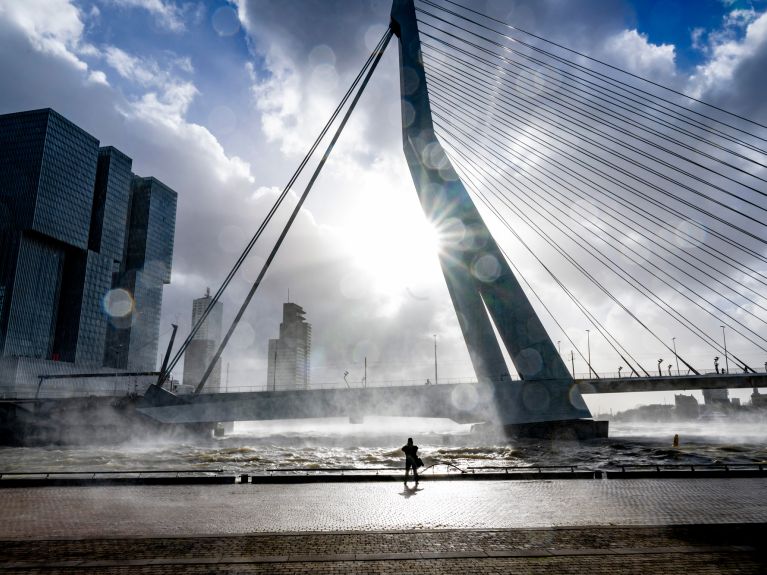The resilient city
Cities must withstand crises, disasters and climate change. Expert Detlef Kurth tells us how this is possible.

Professor Kurth, when it comes to the future of cities, people often talk of urban resilience. What does this term mean?
In the Memorandum on Urban Resilience, we define a triad of attributes for cities. First, resilience means 'bouncing back', i.e. returning to their original state after a crisis or disaster. But that is not enough for sustainable urban development. We therefore need two further dimensions: adaptation and transformation; in other words preparing cities for crises and changing them to make them more sustainable and resilient in the future.
How do cities become resilient?
The first step for a city is to become aware of future crises and disasters. It's very important to have a robust and redundant infrastructure that works well even in a crisis. But it's also about including the resilience aspect in construction projects and assessing future crises. This is part of preventive planning. This includes a risk analysis – for example to see where floods are a threat, or where heat events are to be expected and whether there are people at risk living there. Germany has been fortunate so far in that there have not been many disasters – as a result, however, there is a lack of risk awareness, so the country has some catching up to do.

You also talk about cities in terms of 'colours'. What do you understand by that?
Climate-adaptation strategy speaks of four concepts – green, blue, grey and white – that are closely related to resilience and define goals for cities. Green city means more plants for the microclimate and air quality. Blue city means more water, which means evaporation areas and open waterways to combat extreme heat. Grey city means creating more shade, especially in summer. White city refers to the albedo effect, that white surfaces reflect sunlight and thus counteract the overheating of the city.
It's important for us to learn from each other.
Are there any cities that are considered role models when it comes to resilience?
There are several, and we have studied them. In Europe, for example, there is Rotterdam in the field of flooding. Asian examples include Hong Kong, Taipei and Japanese cities which dealt with the effects of pandemics and earthquakes very early on. But also in India and the United States there are cities that are pursuing interesting approaches. It's therefore important to internationalize urban-development policy in Germany, and to intensify the exchange of information on resilience, for example through city partnerships. It's important for us to learn from each other.
Professor Dr Detlef Kurth of the TU Kaiserslautern is, among other things, chair of the expert group for the preparation of the 'Memorandum on Urban Resilience' for the Federal Ministry of Housing, Urban Development and Construction.


